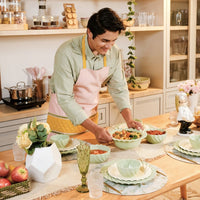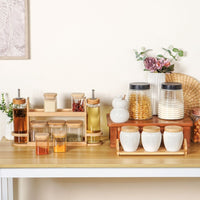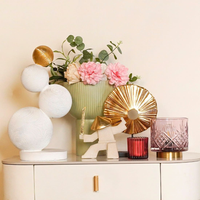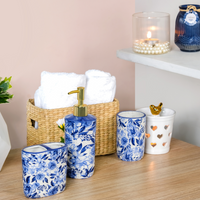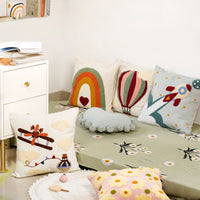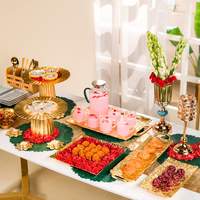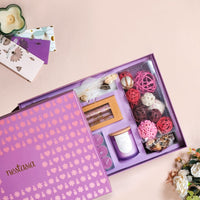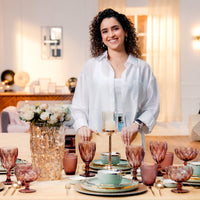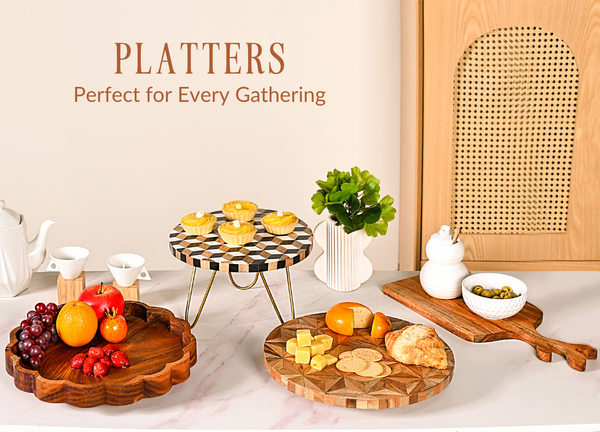Have you ever sat down to a beautifully presented dish at a restaurant and thought, "How do they do that?" It's more than just the taste; the visual appeal of a meal plays a huge role in our perception and enjoyment of it.
For many home chefs, the focus is rightly on flavor and cooking techniques. We spend hours perfecting our recipes, sourcing the finest ingredients, and ensuring that our dishes taste incredible. But what happens once the cooking is done? Often, the final step- ‘plating food’ becomes an afterthought.
Imagine spending an afternoon crafting a masterpiece in your kitchen, using your most trusty cooking pots and kitchen utensils, only for it to be served in a way that doesn't do it justice. The truth is, the way your dinner looks before you take your first bite can significantly enhance the entire dining experience. It's about engaging all the senses, and presentation is a powerful tool in that regard.
This guide isn't here to promise you a Michelin star by tomorrow morning, but it will equip you with practical, easy-to-grasp techniques. You'll learn how to transform your delightful home chef creations from simply delicious to genuinely dazzling, making every dinner a truly special occasion. Get ready to unlock the secrets of plating and bring that restaurant-quality magic right to your table setting!
The “Rule of Thirds” and Color Contrast Basics
Think of your plate as a blank canvas, waiting for your culinary art. The “rule of thirds” is a fundamental design principle borrowed from photography and art, and it's incredibly effective for dinner plating. Imagine dividing your plate into nine equal sections with two horizontal and two vertical lines. Instead of centering your main element (like a protein or a large portion of vegetables), try placing it off-center, perhaps at one of the intersection points.
This off-center placement creates a more dynamic and interesting composition, drawing the eye across the plate rather than simply to the middle. It makes the presentation feel more thoughtful and less static.
Beyond placement, consider color contrast. Just as different flavors complement each other on the palate, so do different colors on a plate. A visually appealing dish often boasts a variety of hues. Think about the natural colors of your ingredients: the deep green of spinach, the bright red of tomatoes, the creamy white of mashed potatoes, or the golden brown of roasted chicken. Aim for a palette that is diverse and harmonious.
For instance, a vibrant green vegetable alongside a rich, earthy brown protein, or a bright sauce against a lighter main component, can make your dish pop. This isn't about adding unnecessary ingredients for color alone, but rather being mindful of the natural beauty of your food and how different shades interact to create an appetizing picture.
Garnishing Do's and Don'ts for Stunning Plates
Garnishing is the final flourish, the edible accent that can truly tie a dish together. It's the art of adding small, decorative, and often flavorful elements to enhance the visual appeal and sometimes the aroma and taste of your food. However, there's a delicate balance; a good garnish enhances, while a poor one distracts or detracts.
Dos:
Keep it relevant to the dish: A sprig of fresh rosemary with roasted lamb, a sprinkle of toasted sesame seeds on an Asian-inspired dish, or a swirl of crème fraîche on a hearty soup are all thoughtful choices because they echo or complement ingredients already in the dish.
Prioritize freshness and quality: A wilted herb or a tired-looking slice of citrus will make your entire plate look less appealing. Always use the freshest possible ingredients for your garnishes.
Consider texture and shape: A sprinkle of crunchy toasted nuts on a creamy soup, delicate microgreens on a substantial protein, or finely chopped chives on a pale sauce can add textural interest and visual intrigue.
Be precise and intentional: Every element on the plate should have a purpose, even if that purpose is purely aesthetic. Place garnishes with care, not haphazardly.
Don’ts:
Don’t over-garnish: A dinner plate laden with too many garnishes can look cluttered and confuse the eye, detracting from the main elements of the dish.
Don’t use inedible garnishes: For the home chef, it's generally best to stick to edible garnishes. Your guests shouldn't have to wonder if they can eat something on their plates.
Don’t use garnishes that clash in flavor: A sweet fruit garnish on a savory, spicy dish (unless it's an intentional and balanced sweet-and-sour combination) can be jarring.
Don’t make garnishes too large: They should be an accent, not a second main component.
Simple Swaps, Big Impact: Kitchen Tools
You might think professional plating requires specialized tools, but many of the techniques can be achieved with items you likely already have in your kitchen.
Squeeze Bottles for Sauces: Transfer dressings, purées, flavored oils, or thin sauces into a clean squeeze bottle. This simple tool allows for incredible precision, enabling you to create elegant drizzles, artistic dots, or intricate patterns around your main dish. It’s a game-changer for adding a refined touch.
Cookie Cutters for Form and Shape: Don't limit cookie cutters to baking! Use them to create perfectly shaped portions of rice, polenta, mashed potatoes, or even stacked vegetables. Place the cutter on the plate, gently press in the food, and carefully lift the cutter for a neat, defined shape.
Spoons for Swooshes and Smears: A simple spoon is a powerful plating tool. Use the back of a spoon to create graceful swooshes of purées or sauces across the plate. You can also use the tip to place small dollops of sauce or garnish precisely.
Vegetable Peelers for Ribbons and Shavings: Create elegant ribbons of vegetables like carrots, cucumbers, or zucchini. These thin, delicate strips add visual lightness and can be curled or draped artfully. A peeler can also create delicate chocolate shavings for desserts.
Tongs or Tweezers for Precision Placement: For tiny garnishes like microgreens, edible flowers, or small herbs, a pair of clean kitchen tongs or even food-safe tweezers allows for incredibly precise and delicate placement, ensuring every element is exactly where you want it.
The Art of Saucing Drizzles, Pools and Dots
Sauces are a chef's secret weapon, not just for deepening flavor, but also for adding remarkable visual appeal to your dinner plating. Beyond simple dollops, mastering a few techniques for applying sauces can transform your dish into a work of art.
The Swoosh: This classic technique uses the back of a spoon to create an elegant arc or graceful smear of sauce across the plate. Apply a dollop of sauce to one side of the plate, then drag the back of your spoon through it in a smooth, confident motion. This creates a striking backdrop for your main components and adds a dynamic sweep to your design.
The Pool: Sometimes, a clean, contained pool of sauce is all you need. This technique involves pouring a controlled amount of sauce directly onto the plate, creating a defined base for your protein or vegetables to rest upon. It's especially effective for thicker sauces or purées, providing a neat and intentional presentation.
The Dots: For a more modern and precise look, consider creating small, deliberate dots of sauce around your dish. Use a squeeze bottle for fine control, or even the tip of a spoon for larger dots. You can leave them as perfect circles, or use a skewer or toothpick to gently drag through them, creating abstract designs or delicate lines that add a refined touch to your dinner plating.
Table Story Beyond the Plate's Edge
While stunning dinner plating is central, the overall dining experience extends far beyond the plate itself. The table setting is the backdrop that frames your culinary efforts, creating an inviting atmosphere that complements your beautifully presented meals.
Table mats and table linen: Start with a clean foundation. A thoughtfully chosen table mat or elegant table linen instantly elevates the look of your table. Consider textures and colors that harmonize with your dinner sets and the overall mood you want to create. Linen or cotton can add a touch of warmth and sophistication that a bare table often lacks. A table runner can further define the center of your table and draw the eye, while a full table cover provides a complete and protective surface, dictating the entire aesthetic.
Napkins: Don't just throw out a roll of paper towels. Fabric napkins, even simple ones, add a layer of refinement. Learn a few easy napkin folds; a simple fan or a roll can make a surprisingly big difference. The color and texture of your napkins can also tie into your overall table design.
Dinner sets: Your choice of dinner sets directly impacts how your food appears. While intricate patterns can sometimes compete with the food, a classic white plate often provides the best contrast, allowing the colors and textures of your dish to truly shine. However, don't shy away from using sets that reflect your style, as long as they serve as a good canvas for your creations.
Charger plate: A charger plate, placed beneath your dinner plate, acts like a frame for your masterpiece. It adds a layer of formality and visual weight to the table, creating a distinct boundary for each place setting. It's an extra touch that signals a special occasion.
Napkin rings: They are small details that make a big impact. They hold your neatly folded napkins in place, adding a touch of sophistication and intentionality to each place setting. From simple metallic bands to intricate designs, napkin rings can serve as a subtle glimmer of elegance or a bold statement piece, enhancing the overall aesthetic of your table setting. Consider choosing delicate, beautiful napkin rings shaped like a crown or a maple leaf to add a truly unique and artistic flair to your table.
Lighting and ambiance: Don't forget the power of good lighting. Soft, warm lighting, perhaps from dimmer switches or candles, can make a dining area feel more intimate and inviting. Avoid harsh overhead lights that can flatten the look of your food.
Tailoring Your Plating Style According to the Meal
While the core principles of plating food remain consistent, the execution can certainly vary based on the meal's formality and purpose. What works for a relaxed brunch might not suit a formal dinner.
Casual meals: For casual meals, focus on creating a sense of rustic charm and generous comfort. Portions can be more substantial, and dishes are often served family-style, encouraging shared enjoyment directly from attractive serving bowls or platters rather than individual intricate dinner plating.
Formal dinners: When planning formal dinners, the emphasis shifts to precision, refined presentation, and artistic arrangement. Portions are typically smaller, and each element on the plate is placed with deliberate care to create a visually striking and elegant experience for each guest.
Dessert plating: Dessert plating presents its unique considerations, often involving a delicate balance of textures and flavors. Whether served in a dessert plate, simple bowl, or on a flat plate, consider incorporating artful drizzles of sauces, light dustings of powdered sugar or cocoa, and delicate garnishes like fresh berries or edible flowers to make the sweet finish truly memorable.
Crafting a Culinary Story on Your Plate
When plating food, think about the narrative of your dish. What's the main story? How do the side components support it? Arrange elements on the plate to suggest flow and movement, leading the diner's eye through the dish. This could be a gentle curve of sauce or a line of smaller components directing attention to the main protein. Each ingredient should have its space and contribute to the overall balance, visually and in terms of flavor and texture.
This storytelling extends beyond the plate to the entire table setting. The careful choice of table mats or table linen sets the stage, with table trivets strategically placed for both protection and organization. Every element, from your perfectly garnished dinner plating to the folds of your napkins and the selection of your dinner sets, works in harmony. It's about creating a seamless flow that invites guests to savor not just the taste, but the entire, beautifully presented story of your home chef's dinner.
Practice Makes Perfect
Like any skill, plating improves with practice. Start small. Choose one or two techniques from this guide to focus on for your next dinner. Try the "rule of thirds" with your main protein, or experiment with a simple sauce drizzle using a squeeze bottle. Don't be afraid to experiment with different arrangements and garnishes. Take photos of your work to see what looks good and what could be improved. You'll quickly develop an eye for what works and what doesn't.
Ultimately, plating food is about respect; respect for the ingredients, respect for the effort you put into cooking, and respect for the people you’re serving. It transforms a simple act of eating into a richer, more memorable experience. When you take the time to present your food beautifully, you’re not just feeding bodies; you’re nourishing spirits and creating lasting memories. It shows care, attention to detail, and a passion for what you do.
So, the next time you finish cooking a fantastic dinner, pause for a moment before serving. Consider the colors, the textures, and the best way to arrange them on your dinner sets. Use these tips as your guide to explore the art of plating.
You don't need to be a professional chef to create stunning meals at home. With a little practice and attention to the details of garnishing, table setting, and thoughtful arrangement, you can consistently deliver dishes that look as incredible as they taste, turning every dinner into a true culinary delight.
Happy plating!

